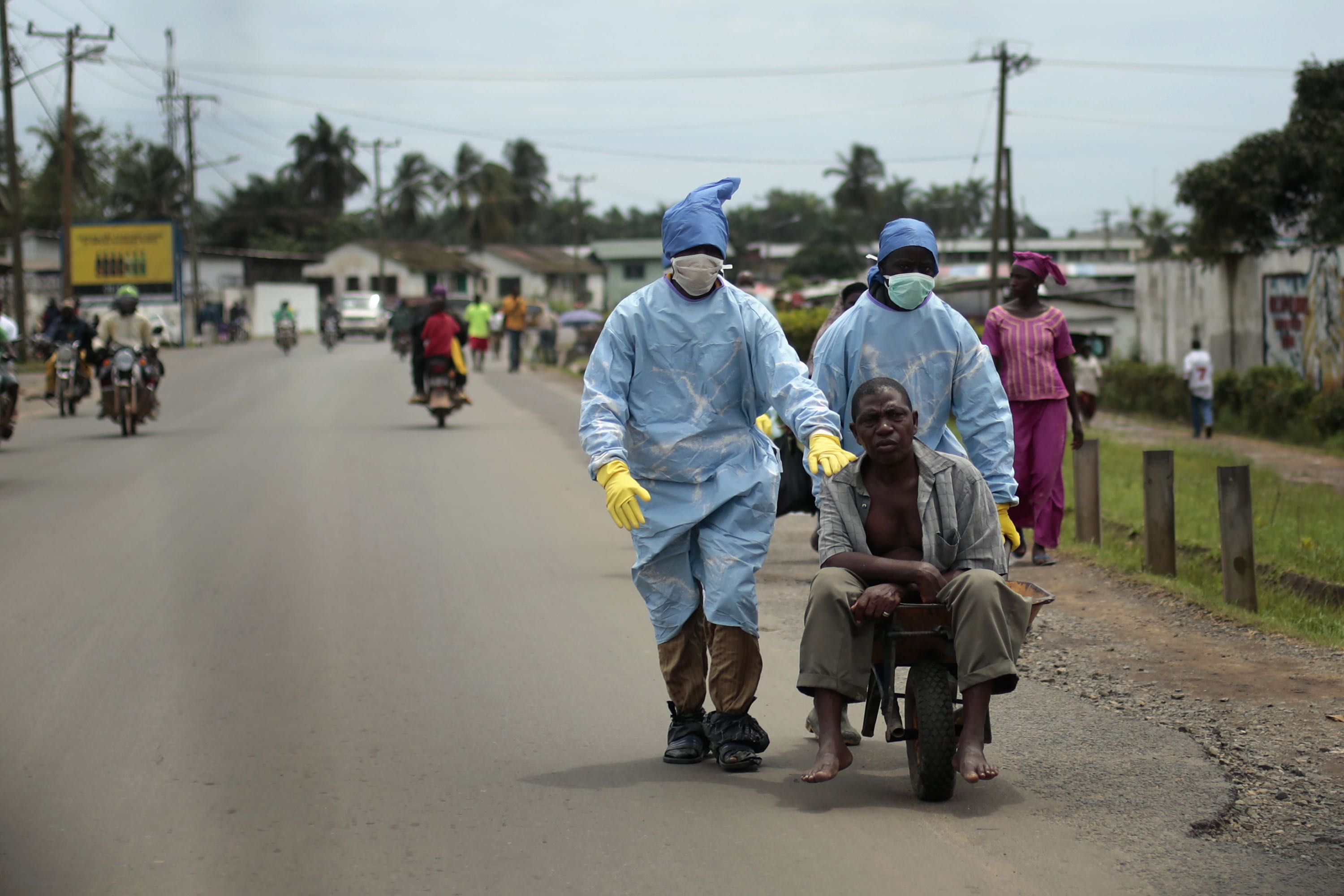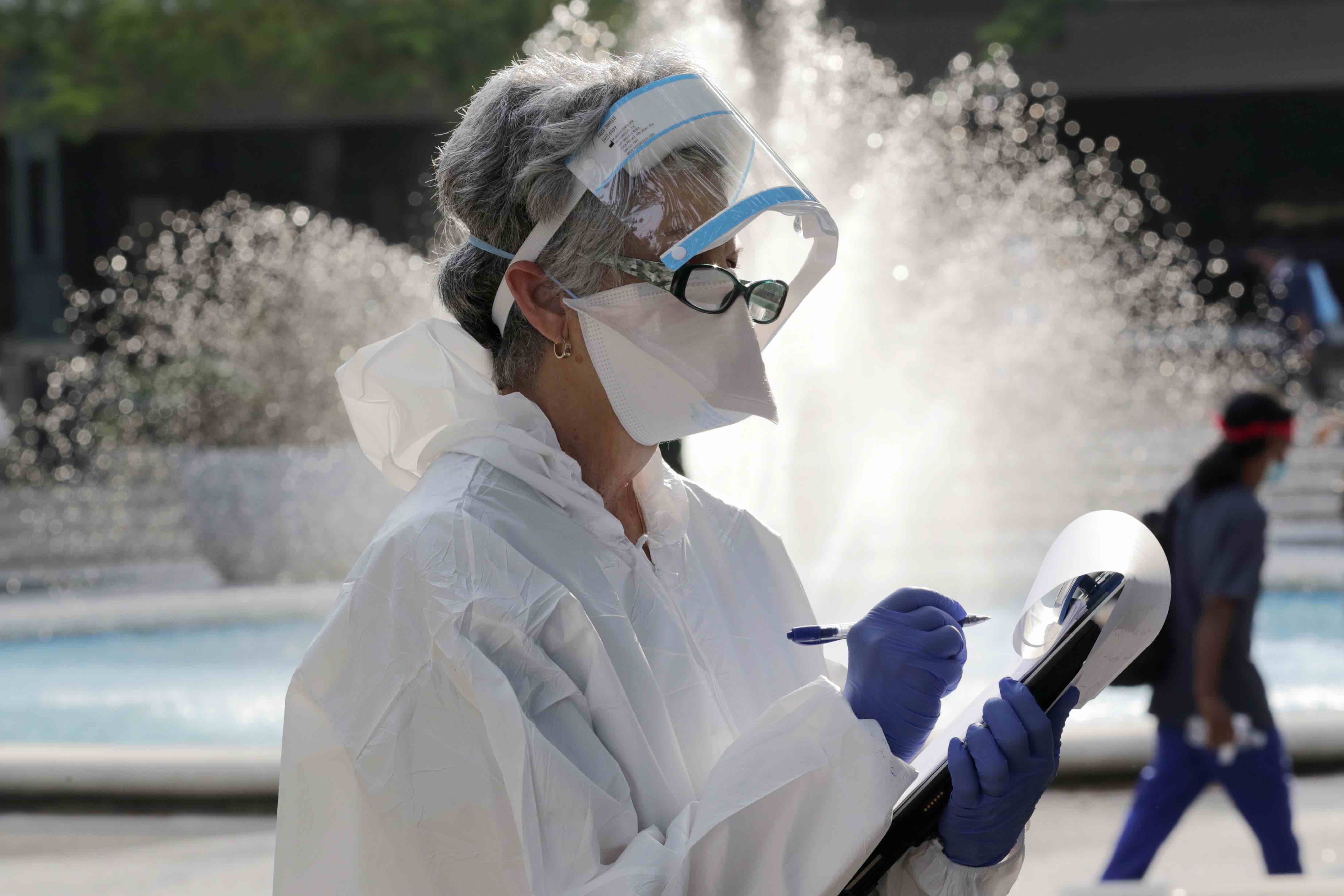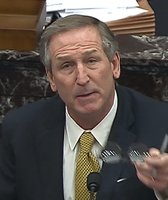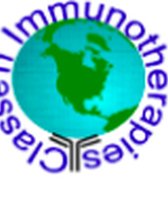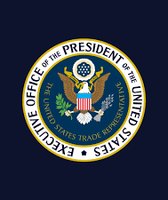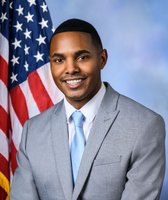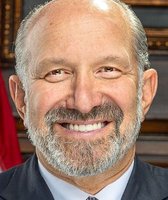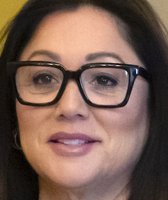Stand up for the facts!
Our only agenda is to publish the truth so you can be an informed participant in democracy.
We need your help.
I would like to contribute
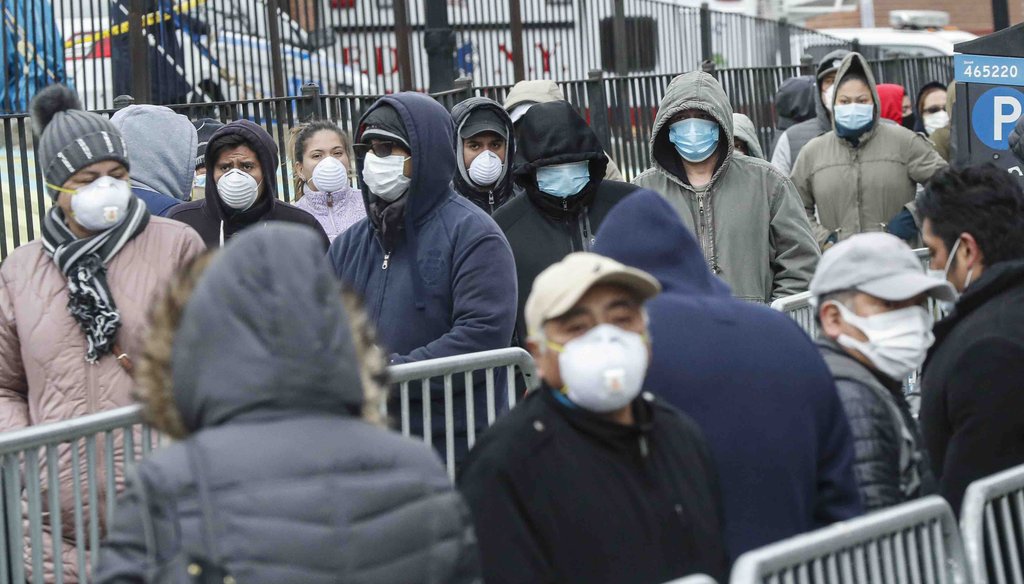
Patients wear personal protective equipment while maintaining social distancing as they wait in line for a COVID-19 test at Elmhurst Hospital Center on March 25, 2020, in New York. (AP)
If Your Time is short
-
Contact tracing has become a key strategy of the White House plan to reopen states.
-
The process tasks public health workers with learning as much as they can about who a patient has been in contact with so they can be notified about their potential exposure.
-
Contact tracing has been used to slow the spread of other diseases, such as SARS and HIV. It’s a common strategy in public health departments across the country.
-
State and local public health officials are hiring thousands of new contact tracers, but some experts say the federal government needs to spend billions of dollars to bolster those efforts.
-
Apple and Google have teamed up to create an app that lets COVID-19 patients send data to public health officials, who can then use it to track who else might have been exposed to the virus.
Contact tracing is a key step toward slowing the spread of the coronavirus. It means tacking the movements of patients and who they’ve interacted with — possibly by using their cell phones.
Dr. Anthony Fauci, director of the National Institute of Allergy and Infectious Diseases, said that some states could start seeing a "rolling re-entry" to business as usual as soon as May. But it depends on how well public health officials are prepared to prevent future COVID-19 cases.
"When one starts to relax some of those restrictions, we know that there will be people who will be getting infected. I mean, that is just reality," he said April 12 on CNN. "The critical issue is to be able to, in real time, identify, isolate and contact trace — that’s called containment."
Contact tracing involves identifying and alerting people who may have come in contact with an infected person to prevent them from unknowingly spreading the virus. The process has been used to fight several past epidemics, including Ebola and HIV.
Over the past few weeks, contact tracing has become a key goal of the White House coronavirus task force as it considers rolling back social distancing guidelines. Both Fauci and Vice President Mike Pence have mentioned it during press briefings. Apple and Google are teaming up to build an app that tracks contacts. And the Centers for Disease Control and Prevention has issued guidance to health care providers on how and when to start contact tracing.
Sign up for PolitiFact texts
But what does contact tracing actually look like — and how has it been used to contain other disease outbreaks? PolitiFact consulted public health organizations and experts to learn more. If you have a question we didn’t answer, send it to truthometer@politifact.com.
How does contact tracing work?
When someone is infected with the novel coronavirus, they may unknowingly spread it to other people. Since COVID-19 symptoms take up to 14 days to manifest, those people could then go about their lives not knowing that they’d been exposed, spreading the virus even further.
That’s the problem that contact tracing aims to solve.
Contact tracing tasks public health workers with learning as much as they can about who a patient has been in contact with so they can be notified about their potential exposure. One way to think about the process is a series of "disease investigations."
"That’s like the nickname for them. It’s investigative work — you’ve got to learn everything about this person that you can, and you have to help them recall what they did over the last 14 days," said Jerne Shapiro, a lecturer in the Department of Epidemiology at the University of Florida. "This is called ‘shoe-leather epidemiology.’"
Contact tracing is broken up into three steps: identification, listing and follow-up.
RELATED: Antibody tests: The promise and pitfalls of using them to reopen the US
Once a patient is confirmed to be infected with the virus, public health workers ask about the people they’ve been in contact with. Potential contacts can include family members, work colleagues, friends or other health care workers.
Then, public health workers list all the people the patient has interacted with and try to notify them. Contacts are told how to identify early symptoms and what next steps they should take to prevent potentially spreading the virus, including possible quarantine or isolation.
"You try to be quick while also establishing trust with people — you want them to be honest," said Dr. Seema Yasmin, director of research and education programs at the Stanford Health Communication Initiative and a former member of the U.S. Epidemic Intelligence Service. "It takes skill and empathy and compassion."
Finally, regular follow-ups are conducted to monitor contacts for symptoms. Should any become infected, the process starts over with the new patient.
How has it been used in the past?
Contact tracing has been used in several past epidemics. When done right, it helped slow the rate of infection.
One of the largest modern contact tracing efforts was during the 2014-15 Ebola epidemic in Liberia. Contact tracers were chosen in specific communities, visited with contacts in person and reported back to health officials.
A study published in 2018 found that contact tracing helped prevent hundreds of new infections in Liberia — of 25,000 people who were listed and monitored, 334 were identified as potential new cases. The finding echoed a 2015 CDC report.
In this Sept. 28, 2014, file photo, residents of the St. Paul Bridge neighborhood, wearing personal protective equipment, take a man suspected of carrying the Ebola virus to the Island Clinic in Monrovia, Liberia. (AP)
Contact tracing was also a key strategy in slowing the spread of Severe Acute Respiratory Syndrome in 2003. In Singapore, health officials enlisted the help of the military to trace contacts and enforce home quarantines, effectively shutting down the outbreak there.
"Contact tracing helped us get a handle on Ebola and SARS," Yasmin said. "I have never done an epidemic investigation that has not involved contact tracing."
In the U.S., the process has proved particularly successful in identifying new tuberculosis cases. A 2019 study found that 31% of children and adolescents with tuberculosis between 2010 and 2017 were diagnosed through contact tracing.
U.S. contact tracing is often conducted in person or over the phone. But that isn’t always the case.
Public health workers have used email and text messaging to notify contacts of patients with sexually transmitted diseases like HIV. One program in North Carolina increased notifications to contacts by 600% and found several new cases of HIV and syphilis. Other epidemiologists use social media to learn more about confirmed cases.
"Our job is to meet the patient where they’re at," Shapiro said.
How could contact tracing slow the spread of COVID-19?
Once social distancing guidelines are lifted for everyone, contact tracing could prevent a rebound in new cases and deaths by isolating potential new patients. It could also lessen the burden placed on hospitals, which have been hard-hit in coronavirus hotspots like New York City.
"We want those cases to occur at a clip that’s manageable for hospitals," said Dr. Amesh Adalja, a senior scholar at the Johns Hopkins University Center for Health Security. "In order to do that, you have to have contact tracers in place to be able to find these individuals and isolate them so we have full situational awareness of what the virus is doing."
RELATED: To stop coronavirus in its tracks, here’s your guide to 5 degrees of separation
To find new cases of the virus, contact tracing depends on the availability of testing, which was scant early in the pandemic. As states start to re-open, Shapiro said public health departments should encourage more people to get tested for COVID-19 once tests are more widely available — even if they are asymptomatic or only have mild symptoms.
"Once we have the capability to test as many people as want to get tested, the capability of the human resource side — to put somebody in isolation who is positive, to find out who their contacts were and put them into quarantine — that is your strongest tool to prevent the spread of the disease," she said.
What are health officials doing now?
Having adequate personnel and resources is one of the big hurdles to rolling out contact tracing across the country. State and local public health departments are usually not well-resourced or well-staffed, Adalja said, so many are not prepared to tackle the time-consuming process of contact tracing COVID-19 patients.
States are hiring thousands of more people to ramp up their contact-tracing efforts.
The New York Times reported that Massachusetts is the first state to invest in a contact-tracing program, budgeting $44 milion to hire 1,000 people as public health workers. The city of San Francisco is partnering with the University of California to create a team of 150 people who will make phone calls, text and track potential coronavirus patients. In March, Florida took a similar approach, hiring 100 people from local universities to help 264 infectious disease specialists who were already working on contact tracing.
Alina Wetzstein wears personal protection equipment as she interviews the homeless for testing for COVID-19 in a program administered by the Miami-Dade County Homeless Trust on April 16, 2020, in Miami.
Those efforts will strengthen the work of local public health departments. But CDC Director Robert Redfield told NPR on April 10 that the agency will need "a substantial expansion" of fieldworkers and more testing to ensure the infection rate doesn’t rebound once social distancing is loosened.
A report authored by several health experts calls for a new national public health workforce that would employ approximately 100,000 contact tracers.
"This workforce could be strategically deployed to areas of greatest need and managed through state and local public health agencies that are on the front lines of COVID-19 response," the report says. "To do this, we also estimate that Congress will need to appropriate approximately $3.6 billion in emergency funding to state and territorial health departments."
Are there privacy concerns?
Yes. Guidance from public health organizations emphasizes that contact tracing should be conducted anonymously to ensure patients’ privacy, but some say technological solutions could compromise that.
Contact tracing has become common in East Asia, where countries like Singapore and South Korea have used digital surveillance to automatically warn patients’ contacts that they have been exposed to COVID-19. While it’s proven effective at reducing the number of new COVID-19 cases, there is some doubt about whether that strategy could work in the U.S., where privacy laws are more stringent.
Some new private partnerships could offer a solution.
Apple and Google announced they are teaming up to create an app that would enable smartphone users to notify public health authorities when they are diagnosed with the coronavirus. By using Bluetooth technology, public health officials could then notify anyone who had come near the infected person’s phone within the past two weeks.
Some experts have raised concerns about how Apple and Google will use the data they collect from the coronavirus tracking app. But Adalja said he is less concerned with the privacy issues with digital contact tracing since it’s something that mobile phone users can opt into to help.
"I think people share a lot of data on their phones already. This is just harnessing that kind of data," he said. "It could act as a force multiplier for some of the individuals in the health departments that are going to be tasked with doing this. Anything that makes their job easier is going to be better."
Our Sources
ABC 7, "EXCLUSIVE: San Francisco launches initiative to trace every single COVID-19 case and contact," April 9, 2020
Apple, "Apple and Google partner on COVID-19 contact tracing technology," April 10, 2020
The Body Pro, "What Is HIV Contact Tracing and Why Is It Important?" Aug. 8, 2014
Centers for Disease Control and Prevention, "Background and Introduction to Contact Tracing," accessed April 16, 2020
Centers for Disease Control and Prevention, "Controlling the Last Known Cluster of Ebola Virus Disease — Liberia, January–February 2015," May 15, 2015
Centers for Disease Control and Prevention, Coronavirus Disease 2019 (COVID-19): Interim CDC Guidance on Handling Non-COVID-19 Public Health Activities that Require Face-to-Face Interaction with Clients in the Clinic and Field in the Current COVID-19 Pandemic, April 8, 2020
Centers for Disease Control and Prevention, Coronavirus Disease 2019 (COVID-19): Symptoms of Coronavirus, accessed April 15, 2020
Interview with Dr. Amesh Adalja, senior scholar at the Johns Hopkins University Center for Health Security, April 16, 2020
Interview with Dr. Seema Yasmin, director of research and education programs at the Stanford Health Communication Initiative and former member of the U.S. Epidemic Intelligence Service, April 15, 2020
Interview with Jerne Shapiro, lecturer in the Department of Epidemiology at the University of Florida, April 16, 2020
Johns Hopkins Center for Health Security and Association of State and Territorial Health Officials, "A National Plan to Enable Comprehensive COVID-19 Case Finding and Contact Tracing in the US"
The Lancet, "Epidemiology of tuberculosis among children and adolescents in the USA, 2007–17: an analysis of national surveillance data," Oct. 1, 2019
Los Angeles Times, "More than a decade later, SARS offers lessons on Ebola," Oct. 19, 2014
MarketWatch, "‘This could be abused.’ Privacy experts take cautious approach to Apple and Google’s coronavirus contact-tracing technology," April 16, 2020
The New Yorker, "The Coronavirus Pandemic Peaks in New York’s Hospitals," April 15, 2020
The New York Times, "An Army of Virus Tracers Takes Shape in Massachusetts," April 16, 2020
NPR, "Apple And Google Build Smartphone Tool To Track COVID-19," April 10, 2020
NPR, "CDC Director: 'Very Aggressive' Contact Tracing Needed For U.S. To Return To Normal," April 10, 2020
NPR, "Getting Back To Normal: Big Tech's Solution Depends On Public Trust," April 14, 2020
NPR, "How The Painstaking Work Of Contact Tracing Can Slow The Spread Of An Outbreak," March 10, 2020
PLOS Neglected Tropical Diseases, "Contact tracing performance during the Ebola epidemic in Liberia, 2014-2015," Sept. 12, 2018
PolitiFact, "Did FDA regulations slow testing for the coronavirus?" March 23, 2020
Science magazine, "Quantifying SARS-CoV-2 transmission suggests epidemic control with digital contact tracing," March 31, 2020
Sexually Transmitted Diseases, "‘No One’s at Home and They Won’t Pick up the Phone’: Using the Internet and Text Messaging to Enhance Partner Services in North Carolina," February 2014
Tampa Bay Times, "Does our government have what it takes to get Florida’s economy open again?" April 14, 2020
TV Eyes, accessed April 15, 2020
The Wall Street Journal, "How Coronavirus Is Eroding Privacy," April 15, 2020
The White House, "Remarks by President Trump, Vice President Pence, and Members of the Coronavirus Task Force in Press Briefing," April 14, 2020
World Health Organization, "What is contact tracing and why is it important?" May 9, 2017

